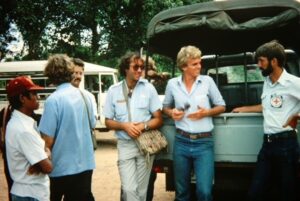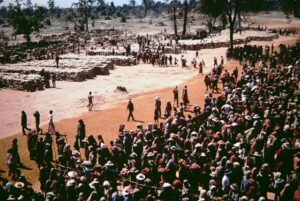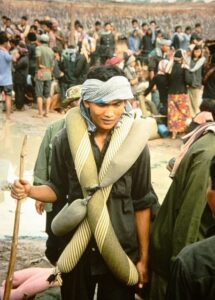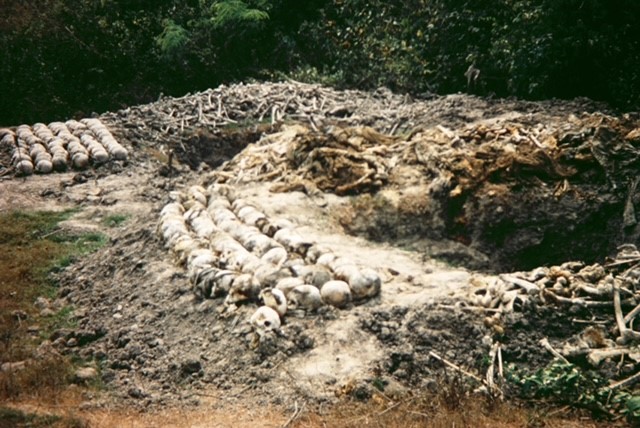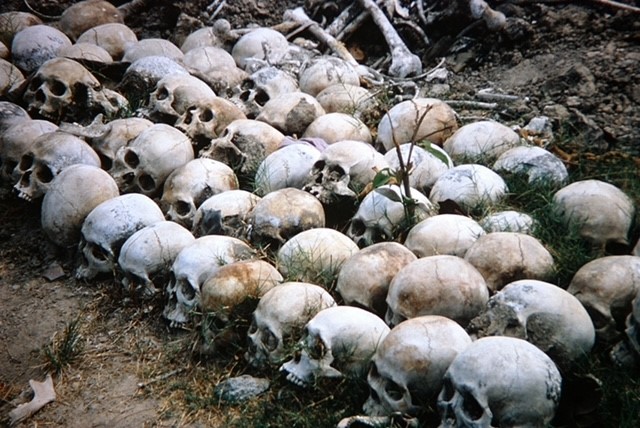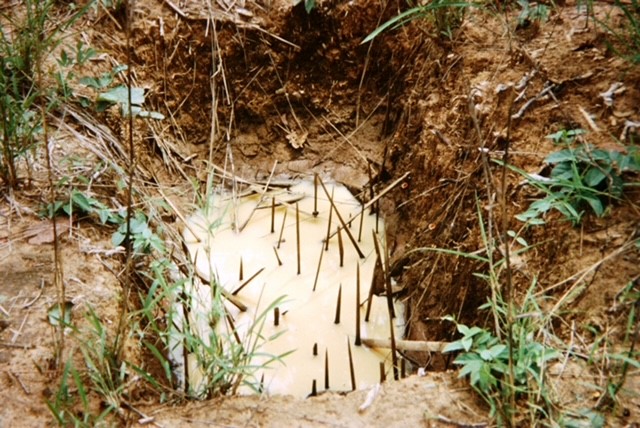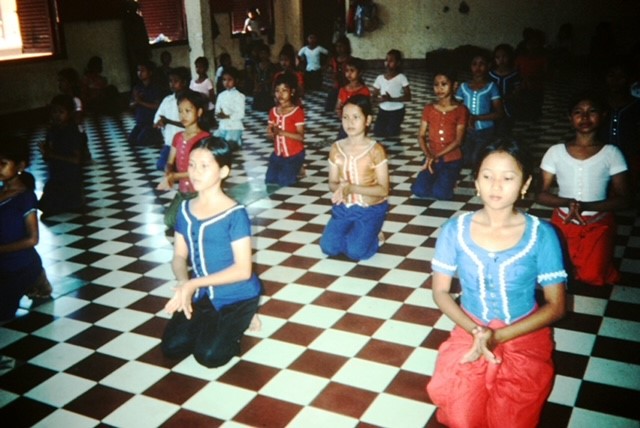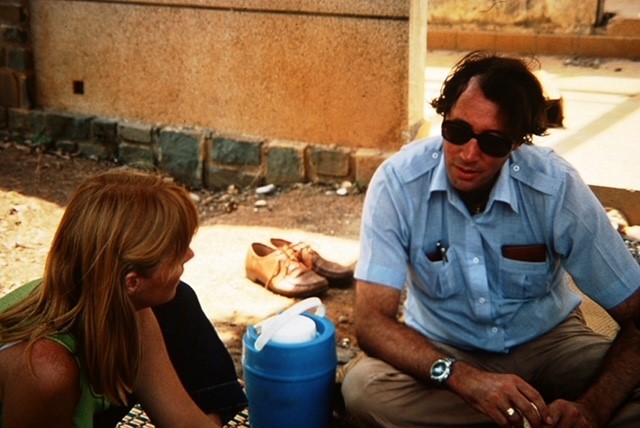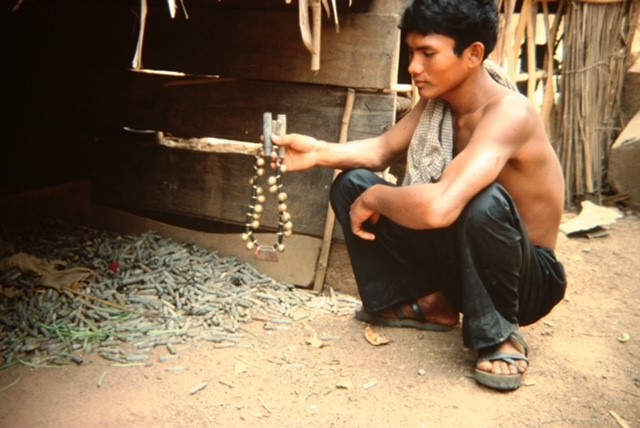The well-worn WWII bomber circled lazily around the massive airport devoid of any visible aircraft. We noted that the jungle perimeter was filled with dozens of wrecked or abandoned aircraft – simply pushed into the trees and slowly disappearing into the tropical foliage.
The group included the pilot from Indonesia, the representative of the cargo plus myself and a colleague. The two of us were on our way to Phnom Penh to meet representatives of the Vietnam Government now in partial control of Cambodia. In the absence of any organized way to fly we were hitching a ride on this flight carrying relief supplies.
We had departed from Singapore that morning. There were no seats or any other amenities and the aircraft had seen better days – but alternatives were few – or rather non-existent!
The owner of the cargo with prior experience in the region observed the landscape and announced, “No idea where we are but this is not (our destination) Phnom Penh!” We landed safely and the pilot rushed back to explain that we were making an extra stop in Ho Chi Minh (former Saigon) to make a ‘delivery’. He pulled back a curtain and revealed a brand new American aircraft engine hidden in the tail of the aircraft.
At this point the owner of the cargo became agitated and began to complain that “If we were transporting such a heavy engine you must have cheated me on the cargo and shipped less weight.” The pilot never cracked a smile but simply stated “You have your full cargo – we landed empty tanks.”
The Vietnamese authorities treated us well and allowed us to shop for a few souvenirs in the neighborhood while other business was being done. We were given to understand that the engine had now been replaced with several ancient museum-quality ceramic elephants.
The Vietnamese were very reluctant to part with any scarce fuel and after much negotiation someone calculated how many liters it would take to make it the 200 km to Phnom Penh! We took off into the twilight and headed in a direct line for Phnom Penh. Taking no chances the pilot aimed straight for the empty and unlit runway (regardless of wind direction) and landed on fumes.
The landing was very hard and we blew both tires. The pilot lost control and we veered off the runway into an adjacent rice paddy. We noted that we were all alive and no injuries so proceeded to make our way to the runway. We saw lights in the distance and soon a jeep with some international staff arrived to check us out. Noting no injuries they offered to take us back into town for dinner – they suggested that priorities should be kept in order!
Phnom Penh had been fully evacuated by the Khmer Rouge in 1975 and was effectively an abandoned city with no power or people. We noted that the buildings all appeared empty but the few who had returned to the city were camping out in makeshift shelters on the sidewalk. The UN and Red Cross colleagues who had met us took us to the one hotel that had been organized to be able to prepare food and was the place everyone went to eat. After dinner it was pitch black in the absence of any lights whatsoever – we walked down the magnificent avenue built by the architect of Paris a century ago. Safety was not a concern in the absence of all traffic as we walked down the very center of the avenue on our way to a second hotel which had been organized with some power and amenities as a place to sleep.
Immediately after finishing his dinner the pilot found a flashlight and announced he would return to the airport and search among the large number of ruined and abandoned aircraft for wheels with tires that matched the axles of his ancient bomber. He apparently succeeded and disappeared at sunrise. We would catch a different relief flight a few days later.
We were hosted cautiously but cordially by the Vietnamese. The person who met with us was a senior person responsible for the return of refugees and distribution of supplies. After a stiff introduction he suddenly blurted out “I know you guys!” or a Vietnamese equivalent! My colleague and I had been responsible for the landbridge program that had sent 800,000 sacks of rice seed plus other supplies across the Thai-Cambodian border and through the jungle the prior planting season. Results had been quite spectacular with the return to their villages of a large part of the refugee population and a crop surplus in the western part of Cambodia.
The Vietnamese official then advised that during that program they wanted to understand the (landbridge) operation and he had personally disguised as a peasant and taken an oxcart through the jungle to our distribution point. He had observed everything and recognized both of us. Given that I am 6’4” and my colleague 6’7” we would be hard to miss in a 5’0 Cambodian crowd!!
He was aware that we had assisted a Christian organization in the distribution of Cambodian bibles to any refugee who wished to take a copy back for themselves or Christians in their village who would have lost their bible in the Khmer Rouge days. He mocked us by stating that Cambodians accepted the bibles because the thin paper was excellent for rolling cigarettes! The real truth may well be complicated!
Our objective was to understand the attitude of Vietnamese authorities to a repeat of the program at the border during the upcoming planting season. He noted that their preference was to purchase rice seed from Thailand and transport it by ship and then distribute it themselves. The Thais at that moment were not issuing export permits for such a program reflecting their own views on political priorities and signals. We hypothesized to our host that a moderate program of distribution at the border, which met some Thai political goals, might facilitate an export permit that allowed the Vietnamese to also meet their political objectives.
The Vietnamese were anxious to expose us to the atrocities of the Khmer Rouge to justify their invasion. The Tuol Sleng prison (Now a museum) or better described as extermination camp has been well documented since that time. We observed bodies being dug out of the ground with hair that had not yet disintegrated and clothing still intact. These piles of skulls have been well exposed to the global community since that time.
This was met by a polite silence but no objections. On return to Thailand we advised the interested agencies to announce a modest border program – the Vietnamese were silent which we took as a signal and in days the Thais issued rice seed export permits for Vietnam. Both programs took place and the Cambodians had a second season of strong rice seed supply. These are the stories that never make the news!
We made many visits but a special memory was the village that had accumulated thousands of spent machinegun shells and was making artifacts such as bells for goats or necklaces as jewelry.
I would make many more comfortable visits to Cambodia in subsequent years but spring of 1981 is certainly the most memorable.
For additional reading re Cambodia 1981…the following are links to my other blog posts.
- Blog Post #32….. Weekend in Geneva – The story of an intervention of a group of 5 – including Joan Baez – in a Geneva Conference to challenge the problematic border politics of restarting Cambodia during a war.
- Blog Post #52…… Cambodia and the Amazing Landbridge – My Memoir version of the larger and overly politicized events of 1980 during the international efforts to bring Cambodia back to life.



